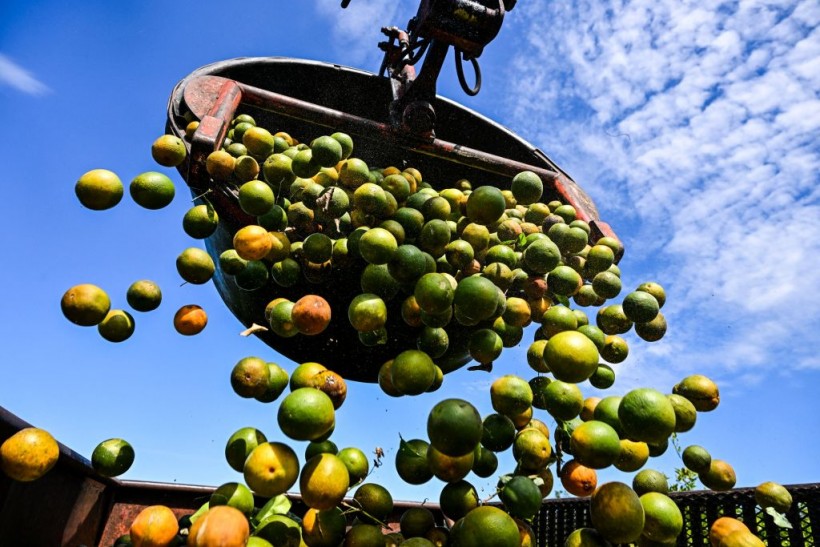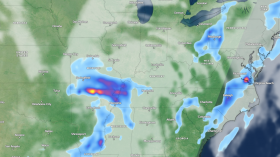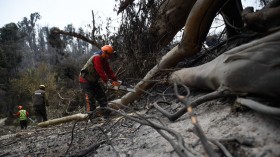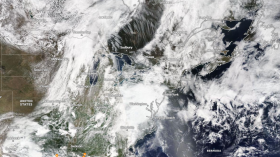There have been previous climate changes. During its history, the Earth has undergone significant alteration every few thousand years.
Usually, animals and plants would be able to evolve and adapt to new conditions. But the pace of change today is greater than ever, and nature is unable to keep up.
If the environment changes, either the plants or the way people maintain their plants must adapt. Fruit plants illustrate this very well. Fruit trees undergo gradual evolution over many generations.
Early Spring/Late Frosts Due To Climate Change And Fruit Trees
 (Photo : CHANDAN KHANNA/AFP via Getty Images)
(Photo : CHANDAN KHANNA/AFP via Getty Images)

Peck outlines one issue that might coexist with climate change in the interview. That is the early spring and late frost phenomenon, as per Orchard People.
The majority of fruit trees are deciduous, losing their leaves in the winter and hibernating.
Early in the spring, fruit trees come out of dormancy and begin to bloom. But, if a late, out-of-season frost occurs at that time, it may damage the tender flowers and dash any expectations for a bountiful crop that year.
Flooding And Drought Related To Climate Change And Fruit Trees
Severe droughts and flooding are also being brought on by the changing climate. Fruit trees are more vulnerable as a result of these alterations to pests, fungus diseases, and poor growing conditions.
Currently, growers are employing carefully selected cover crops in flood-prone areas. These plants can absorb a lot of water thanks to their enormous root systems. Also, researchers are creating cultivars and rootstocks that can withstand dry heat.
Severe heat and fruit trees
Excessive heat can also be a significant problem brought on by climate change. Currently, growers in hot locations must contend with sweltering temperatures that can actually roast fruit that is still growing on the tree.
Fruit trees are grown by Greg Peterson of UrbanFarm.org in Phoenix, Arizona, where summertime highs can reach above 100 degrees F.
He described the methods he used to safeguard his fruit trees in an interview with Urban Forestry Radio: He surrounds his fruit trees with shade trees that can block the sun.
He mulches the trees to safeguard the root systems and aid in water retention. Also, he created a method of irrigation to guarantee that his trees have access to water when they require it.
Also read: Heatwave Prompted by Climate Change May Cause Shortage of Christmas Tree This Year
Would fruit growers benefit from climate change?
The fruit trees are significantly impacted by the shifting climate.
One of the things that supports the chemical process that causes apples to turn color is cool evenings in the late summer and early fall.
Flinchbaugh appears to be experiencing fewer cool nights, which makes it more difficult for us to achieve that lovely red hue on the apples.
Winters are growing warmer, according to science. Fruit growers are suffering, especially with the threat of late-season freezes, as per 8 WGAL.
The trees begin accumulating those degree days, which helps the buds start pushing, and we get 70-degree days in March, some years even in February.
Then comes the cold, which is perhaps not exceptional, but because the buds were pushed out a little earlier, they are a little more vulnerable to freezes, according to York County's Michael Flinchbaugh of Flinchbaugh's Orchard.
According to Flinchbaugh, farmers must implement new tactics to deal with the effects of climate change.
They recently began using this kind of innovative technique-applying potassium-based fertilizer-over the past five or six years.
To try to reflect some of that sunshine up into the trees to help the fruit develop more coloring, they used reflecting mulch last year, which we placed down in the rows approximately three weeks before harvest.
Related article: Adapting to Climate Change Could Still Mean Environmental Troubles
© 2024 NatureWorldNews.com All rights reserved. Do not reproduce without permission.




![Wildfire Activity in Wet African Tropical Forests Exacerbated by Deforestation, Climate Change [Study]](https://1471793142.rsc.cdn77.org/data/thumbs/full/70409/280/157/50/40/wildfire-activity-in-wet-african-tropical-forests-exacerbated-by-deforestation-climate-change-study.jpg)
